
BEHIND SOUNDTUBE: A WORD WITH ANDY LOPEZ

At InfoComm17, AV Magazine caught up with Andy Lopez, Director of International Sales for MSE Audio. Andy shared his thoughts on the history and direction of one of MSE’s primary brands, SoundTube.
Text: Andy Lopez
SoundTube is the bread and butter brand of MSE Audio. The key feature of SoundTube is that we provide speakers for just about every application.
SoundTube started out with the pendant loudspeaker. We had the original pendant speaker equipped with BroadBeam technology, and we were able to promote the fact that the performance of the product from a pendant standpoint is far better than what anyone else offers, and the BroadBeam technology allows our distributors to offer their clients a better coverage for their facilities with far less speakers.
We have a whole array of pendants from three inches up to 12 inches, so they’ll fit every application. Then we have a number of in-ceiling speakers from short-can to large-can, eight inch, six inch, five inch, three inch. So again, we keep the whole breadth of sizes and the in-ceiling, and the same thing with the surface mount.
So people come to SoundTube because we provide a quality product with great support and a reasonable pricepoint. And our product doesn’t fail, it does what it’s supposed to do, clients like it, we’ve got a good name in the market as SoundTube, and we’re trying to build the brand even more.
DANTE DIRECTION
Our focus for the past couple of years has been on Dante. It’s a language that people don’t totally comprehend and there are so many manufacturers that are Dante-enabled or Dante-ready, but we’ve not done a really good job of educating the channel on the whole puzzle. Every manufacturer is really speaking to their piece and I will take a huge hit on that individually saying we’re promoting the endpoint as the speaker being Dante, but if you don’t know what the front end of it does, the endpoint really means nothing. So we are trying to spend more time educating the channel on what Dante is and how it’s valuable to the dealer and client. Then there’s the education between the channel of the IT person and the AV guy. The IT person sees Dante as a huge value-added product — if it’s IP and on a network and they can control and manage it, the price tag is irrelevant. The AV guy is constantly looking at the cost of wires and the cost of amps and wondering how to sell this to a client who’s still trying to wrap their head around it.
In the past nine months I would say there’s been a huge uptick. The industry is going past just knowing about and quoting it, to actually ordering and installing it successfully. It’s making sense for specifiers and their consultants. Europe came onboard first, and Asia has come onboard too. But I think we’re just on the very tip of what the opportunity is. So I see the advertising as an opportunity to get the message out that we’re part of that ecosystem.
The main advantage: part one is it’s the final piece of the puzzle to a true Dante system. We’re taking what would be considered the ‘dumbest’ part of the system and giving it some brainpower. More importantly, it’s the management of the speakers that you don’t typically have. We’re able to move zones and sources around between speakers through a computer without having to rewire or cut holes in the wall. It’s much more flexible than a hardwired copper system from the past. And the feedback you get from the status of the speakers is also a benefit for the distributor, the dealer, or the client, because they can monitor the temperature of the speakers, the status of the speakers, whether it’s on or off, if there’s a condition problem that needs to be dealt with, and so on. That’s a much more proactive way of supporting your client than having the client call up and say, “the speaker’s out” — at that point it’s a little too late.
SHIFTING SANDS
We’ve been taken into the technological world of IP. There’s so much flexibility in not having to physically rewire stuff or pay for extra hardware to do some of the things you can now do literally with ‘drag and drop’ mode. Moving rooms, moving sounds, moving sources is a far cry from what it was two years ago.
The real estate advantages is the saving in rack space, and this might be why Europe caught on a little bit quicker. They’re dealing with tougher installations and retros to the infrastructure of the walls and issues of having limited rack space. When you’ve got a few hundred speakers, with each pair running off a two-channel amplifier, that takes up some rack space. Whereas now, that’s all gone. So you’re paying a little bit more for the speaker with the amp built in but you’re not dealing with the issues you may have by having extra hardware in the game with rack and other vendors and wiring and all that.
Australian Distributor: www.nationalaudio.com.au




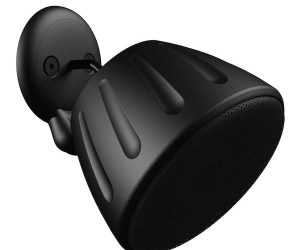
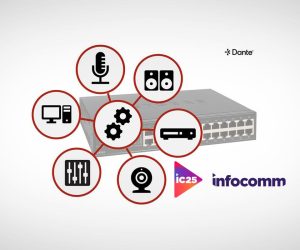


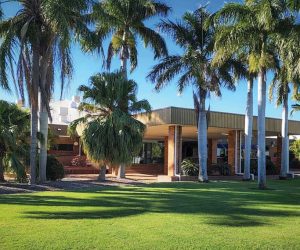

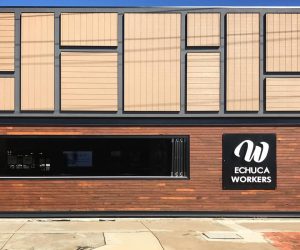
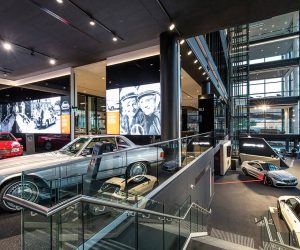



RESPONSES